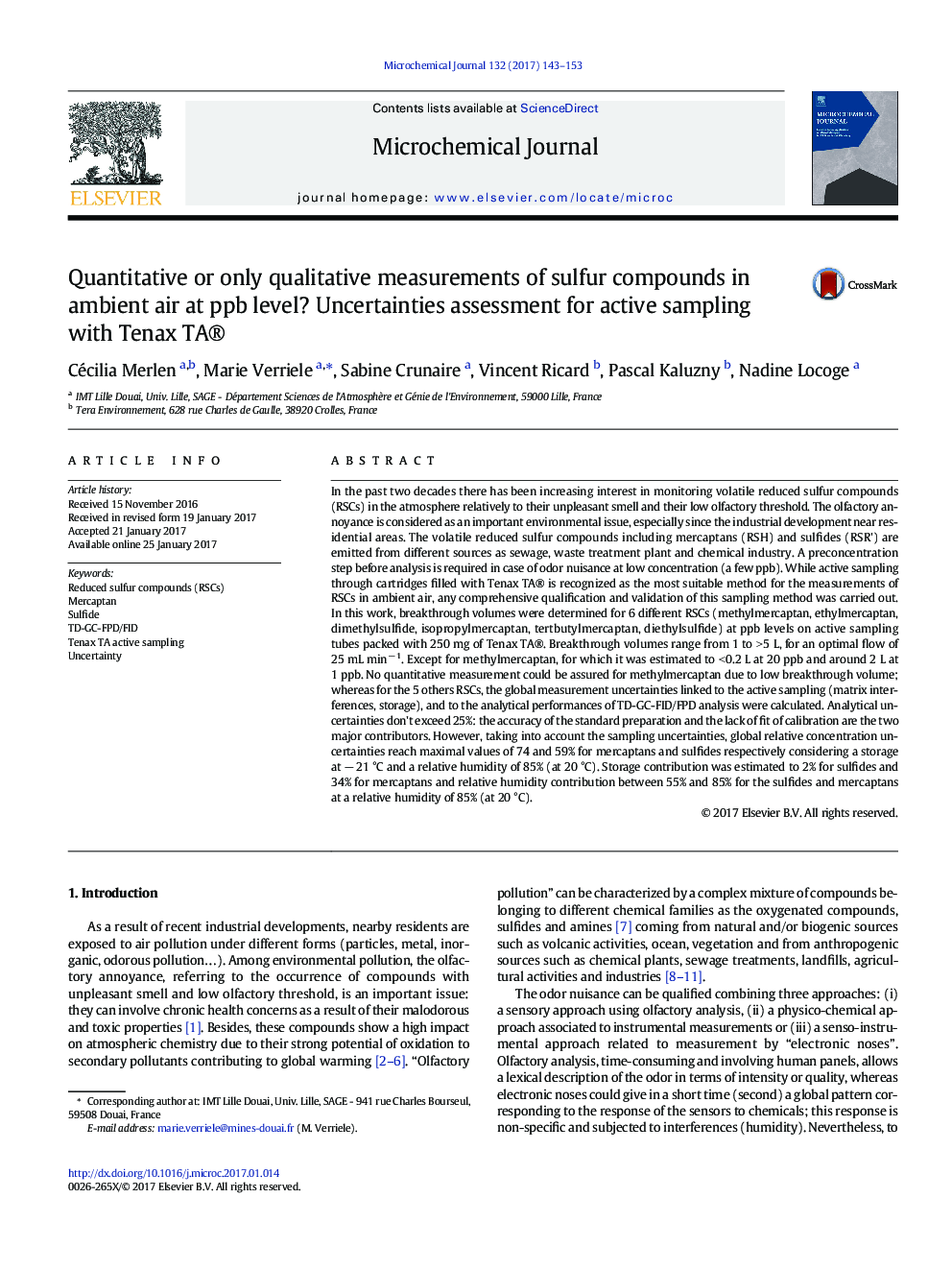| Article ID | Journal | Published Year | Pages | File Type |
|---|---|---|---|---|
| 5139167 | Microchemical Journal | 2017 | 11 Pages |
Abstract
In the past two decades there has been increasing interest in monitoring volatile reduced sulfur compounds (RSCs) in the atmosphere relatively to their unpleasant smell and their low olfactory threshold. The olfactory annoyance is considered as an important environmental issue, especially since the industrial development near residential areas. The volatile reduced sulfur compounds including mercaptans (RSH) and sulfides (RSR') are emitted from different sources as sewage, waste treatment plant and chemical industry. A preconcentration step before analysis is required in case of odor nuisance at low concentration (a few ppb). While active sampling through cartridges filled with Tenax TA® is recognized as the most suitable method for the measurements of RSCs in ambient air, any comprehensive qualification and validation of this sampling method was carried out. In this work, breakthrough volumes were determined for 6 different RSCs (methylmercaptan, ethylmercaptan, dimethylsulfide, isopropylmercaptan, tertbutylmercaptan, diethylsulfide) at ppb levels on active sampling tubes packed with 250 mg of Tenax TA®. Breakthrough volumes range from 1 to > 5 L, for an optimal flow of 25 mL minâ 1. Except for methylmercaptan, for which it was estimated to < 0.2 L at 20 ppb and around 2 L at 1 ppb. No quantitative measurement could be assured for methylmercaptan due to low breakthrough volume; whereas for the 5 others RSCs, the global measurement uncertainties linked to the active sampling (matrix interferences, storage), and to the analytical performances of TD-GC-FID/FPD analysis were calculated. Analytical uncertainties don't exceed 25%: the accuracy of the standard preparation and the lack of fit of calibration are the two major contributors. However, taking into account the sampling uncertainties, global relative concentration uncertainties reach maximal values of 74 and 59% for mercaptans and sulfides respectively considering a storage at â 21 °C and a relative humidity of 85% (at 20 °C). Storage contribution was estimated to 2% for sulfides and 34% for mercaptans and relative humidity contribution between 55% and 85% for the sulfides and mercaptans at a relative humidity of 85% (at 20 °C).
Keywords
Related Topics
Physical Sciences and Engineering
Chemistry
Analytical Chemistry
Authors
Cécilia Merlen, Marie Verriele, Sabine Crunaire, Vincent Ricard, Pascal Kaluzny, Nadine Locoge,
